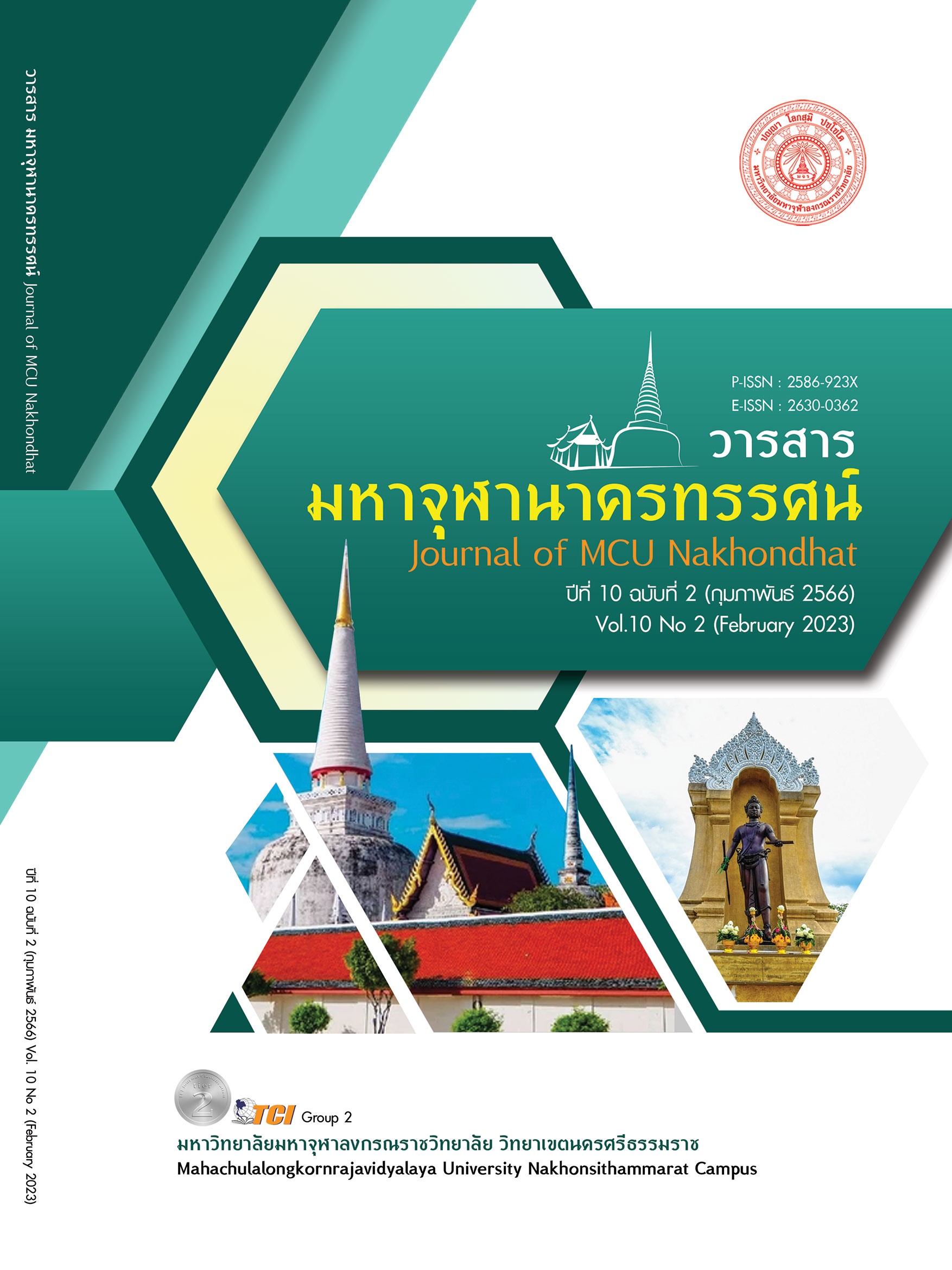THE RELATIONSHIP BETWEEN LEADERSHIP CHARACTERISTICS OF SCHOOL ADMINISTRATORS AND ORGANIZATIONAL ENGAGEMENT OF TEACHERS IN CHARITABLE PRIVATE SCHOOLS CHIANG RAI
Main Article Content
Abstract
The objectives of this research were 1) to study the leadership characteristics of administrators, 2) to study the organizational commitment of teachers, 3) to study the relationship of school administrators’ leadership characteristics and teacher’s organizational commitment. Charity private school Chiang Rai. There were 144 people using the hierarchical random sampling method. The research tools were a questionnaire to study of the relationship between leadership characteristics of school administrators, and a questionnaire. According to Yulk’s concept and Teacher’s organizational commitment According to Allen and Meyer’s concept. The statistics used for research were percentage, mean, standard deviation. and the correlation was determined by Pearson,s correlation coefficient. The results of the study revealed that 1) leadership characteristics of executives. Chiang Rai Charity Private School Overall, The average was at a high level, with an understanding of the situation Followed by the assingnment of roles and responsibilities according to aptitude Giving advice when problems arise Interaction Personnel promotion and support setting rules and regulations for implementation and planning in descending order 2) Teacher’s organizational commitment Chiang Rai Charity Private School overall, it was at a high level. With ties to social norms at the high level followed by mental engagement and persistence commitment with the organization were in the lowest order. 3) The relationship between leadership characteristics of school administrators with teacher organizational engagement charity private school Chiang Rai have a relationship and go in the same direction. When the quality of management is high will result in high relationship with teachers. Statistically significant at the 0.01 level.
Article Details

This work is licensed under a Creative Commons Attribution-NonCommercial-NoDerivatives 4.0 International License.
References
กัณฐิกา สุรโคตร. (2559). ความผูกพันต่อองค์การของข้าราชการครูโรงเรียนขนาดกลาง ในอำเภอแก่งหางแมว สังกัดสำนักงานเขตพื้นที่การศึกษาจันทบุรี เขต 1. ใน ดุษฎีนิพนธ์การศึกษามหาบัณฑิต สาขาวิชาการบริหารการศึกษา. มหาวิทยาลัยรังสิต.
ปรารถนา หลีกภัย. (2563). ความผูกพันต่อองค์กรของบุคลากรภาครัฐในจังหวัดตรัง. วารสารบริหารธุริจและสังคมศาสตร์มหาวิทยาลัยรามคำแหง.
ปาลภัสสร์ อัญบุตร. (2561). พฤติกรรมผู้นำของผู้บริหารสถานศึกษาที่มีผลต่อความผูกพันต่อสถานศึกษาของครูในสังกัดกรุงเทพมหานคร. ใน ดุษฎีนิพนธ์ศึกษาศาสตรดุษฎีบัณฑิต สาขาการศึกษา. มหาวิทยาลัยรังสิต.
พระราชบัญญัติโรงเรียนเอกชน (ฉบับที่ 2). (2554). ราชกิจจานุเบกษา เล่มที่ 125 ตอนที่ 7 ก หน้า 40. (30ธันวาคม 2550).
พิชญาภา ขวัญยืน. (2560). คุณลักษณะผู้นำของผู้บริหารสถานศึกษาเอกชนตามทัศนะของครูผู้สอนโรงเรียนเอกชนเขตอำเภอสัตหีบ จังหวัดชลบุรี. ใน ดุษฎีนิพนธ์การศึกษามหาบัณฑิต สาขาวิชาการบริหารการศึกษา. มหาวิทยาลัยบูรพา.
วรรณิภา ดาอ่ำ. (2564). ความผูกพันต่อองค์กร และพฤติกรรมเชิงสร้างสรรค์ของบุคลากรในวิทยาลัยเอกชนในฝั่งธนบุรี. ใน ดุษฎีนิพนธ์บริหารธุรกิจมหาบัณฑิต สาขาวิชาหลักสูตรบริหารธุรกิจมหาบัณฑิต. มหาวิทยาลัยศิลปากร.
สุรีรัตน์ โตเขียว. (2560). รูปแบบภาวะผู้นำของผู้บริหารสถานศึกษาขั้นพื้นฐานในศตวรรษที่ 21. ใน ดุษฎีนิพนธ์ครุศาสตรดุษฎีบัณฑิต สาขาวิชาการบริหารการศึกษา. มหาวิทยาลัยราชภัฏนครสวรรค์.
Bennis,W. (2003). On becoming a leader. Cambridge,MA: Perseus Pub.
Blake, R, & Mouton, J. (1964). The managerial grid: The key to leadership excellence. Houston, TX: Gulf Publishing Co.
Krejcie.R.V.,& Morgan,D.W. (1970). Determining Sample Size for ResearchActivities. Educational and Psychological Measuremant, 30(3),607-610.
Likert, R. . (1961). New patterns of management. New York, NY: McGraw-Hill.
Likert, R. (1961). New patterns of management. New York: NY: McGraw-Hill.
Natalie, J. (1997). ALLen And John P.Meyer,Commitment in the workplace:Theory,Researchand Application. Tousand Oaks,CA:Sage: Publications.
Ozsahin, M., Zehir, C., & Acar, A. Z. (2011). Linking leadership style to firm performance:The mediating effect of the learning orientation. Procedia-Socialand Behavioral Sciences, 24(2011), 1546-1559.
Yukl, G. (2006). Leadership in Organization. New York: Pearson Prentice Hall.


